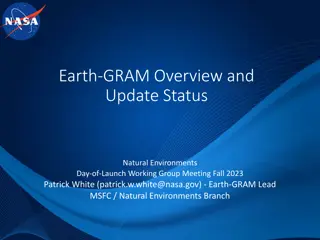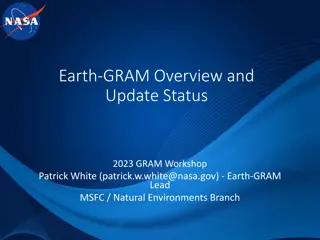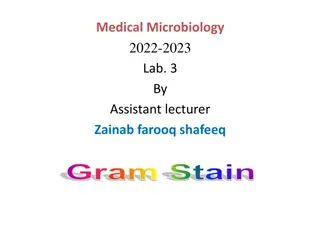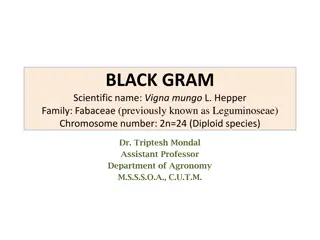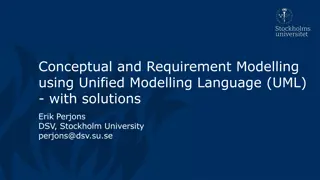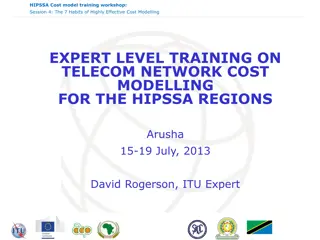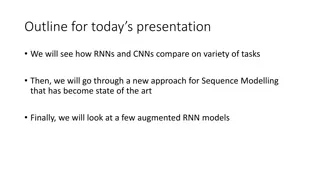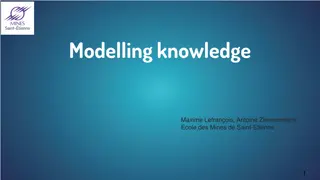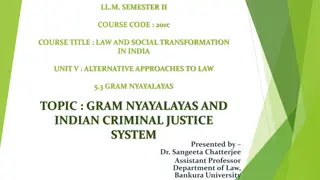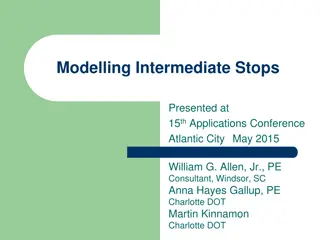Understanding N-Gram Models in Language Modelling
N-gram models play a crucial role in language modelling by predicting the next word in a sequence based on the probability of previous words. This technology is used in various applications such as word prediction, speech recognition, and spelling correction. By analyzing history and probabilities, N-gram models can predict parts of speech, aid in statistical parsing, and facilitate natural language generation. Real-world examples, like Google's search engine, demonstrate how N-gram models improve query accuracy through context-sensitive spelling corrections. The model works by modifying queries based on character-level adjustments to align with the language model, resulting in more accurate search results. The noisy channel model further underlines the importance of N-gram models in speech and language processing.
- N-Gram Models
- Language Modelling
- Speech Recognition
- Spelling Correction
- Natural Language Generation.
Download Presentation

Please find below an Image/Link to download the presentation.
The content on the website is provided AS IS for your information and personal use only. It may not be sold, licensed, or shared on other websites without obtaining consent from the author. Download presentation by click this link. If you encounter any issues during the download, it is possible that the publisher has removed the file from their server.
E N D
Presentation Transcript
Corpora and Statistical Methods Language modelling using N-Grams
Example task The word-prediction task (Shannon game) Given: a sequence of words (the history) a choice of next word Predict: the most likely next word Generalises easily to other problems, such as predicting the POS of unknowns based on history.
Applications of the Shannon game Automatic speech recognition (cf. tutorial 1): given a sequence of possible words, estimate its probability Context-sensitive spelling correction: Many spelling errors are real words He walked for miles in the dessert. (resp. desert) Identifying such errors requires a global estimate of the probability of a sentence.
Applications of N-gram models generally POS Tagging: predict the POS of an unknown word by looking at its history Statistical parsing: e.g. predict the group of words that together form a phrase Statistical NL Generation: given a semantic form to be realised as text, and several possible realisations, select the most probable one.
A real-world example: Googles did you mean Google uses an n-gram model (based on sequences of characters, not words). In this case, the sequence apple desserts is much more probable than apple deserts
How it works Documents provided by the search engine are added to: An index (for fast retrieval) A language model (based on probability of a sequence of characters) A submitted query ( apple deserts ) can be modified (using character insertions, deletions, substitutions and transpositions) to yield a query that fits the language model better ( apple desserts ). Outcome is a context-sensitive spelling correction: apple deserts apple desserts frod baggins frodo baggins frod ford
The noisy channel model After Jurafsky and Martin (2009), Speech and Language Processing (2ndEd). Prentice Hall p. 198
The Markov Assumption Markov models: probabilistic models which predict the likelihood of a future unit based on limited history in language modelling, this pans out as the local history assumption: the probability of wndepends on a limited number of prior words utility of the assumption: we can rely on a small n for our n-gram models (bigram, trigram) long n-grams become exceedingly sparse Probabilities become very small with long sequences
The structure of an n-gram model The task can be re-stated in conditional probabilistic terms: ( | ... ) P w w w 1 1 n n Limiting n under the Markov Assumption means: greater chance of finding more than one occurrence of the sequence w1 wn-1 more robust statistical estimations N-grams are essentially equivalence classes or bins every unique n-gram is a type or bin
Structure of n-gram models (II) If we construct a model where all histories with the same n-1 words are considered one class or bin, we have an (n-1)th order Markov Model Note terminology: n-gram model = (n-1)thorder Markov Model
Methodological considerations We are often concerned with: building an n-gram model evaluating it We therefore make a distinction between training and test data You never test on your training data If you do, you re bound to get good results. N-gram models tend to be overtrained, i.e.: if you train on a corpus C, your model will be biased towards expecting the kinds of events in C. Another term for this: overfitting
Dividing the data Given: a corpus of n units (words, sentences, depending on the task) A large proportion of the corpus is reserved for training. A smaller proportion for testing/evaluation (normally 5-10%)
Held-out (validation) data Held-out estimation: during training, we sometimes estimate parameters for our model empirically commonly used in smoothing (how much probability space do we want to set aside for unseen data)? therefore, the training set is often split further into training data and validation data normally, held-out data is 10% of the size of the training data
Development data A common approach: 1. train an algorithm on training data a.(estimate further parameters on held-out data if required) 2. evaluate it 3. re-tune it 4. go back to Step 1 until no further finetuning necessary 5. Carry out final evaluation For this purpose, it s useful to have: training data for step 1 development set for steps 2-4 final test set for step 5
Significance testing Often, we compare the performance of our algorithm against some baseline. A single, raw performance score won t tell us much. We need to test for significance (e.g. using t-test). Typical method: Split test set into several small test sets, e.g. 20 samples evaluation carried out separately on each mean and variance estimated based on 20 different samples test for significant difference between algorithm and a predefined baseline
Size of n-gram models In a corpus of vocabulary size N, the assumption is that any combination of n words is a potential n-gram. For a bigram model: N2possible n-grams in principle For a trigram model: N3possible n-grams.
Size (continued) Each n-gram in our model is a parameter used to estimate probability of the next possible word. too many parameters make the model unwieldy too many parameters lead to data sparseness: most of them will have f = 0 or 1 Most models stick to unigrams, bigrams or trigrams. estimation can also combine different order models
Further considerations When building a model, we tend to take into account the start-of-sentence symbol: the girl swallowed a large green caterpillar <s> the the girl Also typical to map all tokens w such that count(w) < k to <UNK>: usually, tokens with frequency 1 or 2 are just considered unknown or unseen this reduces the parameter space
Building models using Maximum Likelihood Estimation
Maximum Likelihood Estimation Approach Basic equation: ( w ... ) P w w = 1 ( | ... ) n P w w w 1 1 n n ( ... ) P w 1 1 n In a unigram model, this reduces to simple probability. MLE models estimate probability using relative frequency.
Limitations of MLE MLE builds the model that maximises the probability of the training data. Unseen events in the training data are assigned zero probability. Since n-gram models tend to be sparse, this is a real problem. Consequences: seen events are given more probability mass than they have unseen events are given zero mass
Seen/unseen Probability mass of events not in training data A A The problem with MLE is that it distributes A among members of A. Probability mass of events in training data
The solution Solution is to correct MLE estimation using a smoothing technique. More on this in the next part But cf. Tutorial 1, which introduced the simplest method of smoothing known.
Adequacy of different order models Manning/Schutze `99 report results for n-gram models of a corpus of the novels of Austen. Task: use n-gram model to predict the probability of a sentence in the test data. Models: unigram: essentially zero-context markov model, uses only the probability of individual words bigram trigram 4-gram
Example test case Training Corpus: five Jane Austen novels Corpus size = 617,091 words Vocabulary size = 14,585 unique types Task: predict the next word of the trigram inferior to ________ from test data, Persuasion: [In person, she was] inferior to both[sisters.]
Selecting an n Vocabulary (V) = 20,000 words Vocabulary (V) = 20,000 words n Number of bins (i.e. no. of possible unique n-grams) 400,000,000 2 (bigrams) 3 (trigrams) 8,000,000,000,000 4 (4-grams) 1.6 x 1017
Adequacy of unigrams Problems with unigram models: not entirely hopeless because most sentences contain a majority of highly common words ignores syntax completely: P(In person she was inferior) = P(inferior was she person in)
Adequacy of bigrams Bigrams: improve situation dramatically some unexpected results: p(she|person) decreases compared to the unigram model. Though she is very common, it is uncommon after person
Adequacy of trigrams Trigram models will do brilliantly when they re useful. They capture a surprising amount of contextual variation in text. Biggest limitation: most new trigrams in test data will not have been seen in training data. Problem carries over to 4-grams, and is much worse!
Reliability vs. Discrimination larger n: more information about the context of the specific instance (greater discrimination) smaller n: more instances in training data, better statistical estimates (more reliability)
Backing off Possible way of striking a balance between reliability and discrimination: backoff model: where possible, use a trigram if trigram is unseen, try and back off to a bigram model if bigrams are unseen, try and back off to a unigram
Perplexity Recall: Entropy is a measure of uncertainty: high entropy = high uncertainty perplexity: if I ve trained on a sample, how surprised am I when exposed to a new sample? a measure of uncertainty of a model on new data
Entropy as expected value x = ( ) ( ) log ( ) H X p x p x X One way to think of the summation part is as a weighted average of the information content. We can view this average value as an expectation : the expected surprise/uncertainty of our model.
Comparing distributions We have a language model built from a sample. The sample is a probability distribution q over n-grams. q(x) = the probability of some n-gram x in our model. The sample is generated from a true population ( the language ) with probability distribution p. p(x) = the probability of x in the true distribution
Evaluating a language model We d like an estimate of how good our model is as a model of the language i.e. we d like to compare q to p We don t have access to p. (Hence, can t use KL-Divergence) Instead, we use our test data as an estimate of p.
Cross-entropy: basic intuition Measure the number of bits needed to identify an event coming from p, if we code it according to q: We draw sequences according to p; but we sum the log of their probability according to q. This estimate is called cross-entropy H(p,q)
Cross-entropy: p vs. q Cross-entropy is an upper bound on the entropy of the true distribution p: H(p) H(p,q) if our model distribution (q) is good, H(p,q) H(p) We estimate cross-entropy based on our test data. Gives an estimate of the distance of our language model from the distribution in the test sample.
Estimating cross-entropy x = ( , ) ( ) log ( ) H p q p x q x Probability according to p (test set) Entropy according to q (language model)
Perplexity The perplexity of a language model with probability distribution q, relative to a test set with probability distribution p is: ( , ) H p q 2 A perplexity value of k (obtained on a test set) tells us: our model is as surprised on average as it would be if it had to make k guesses for every sequence (n-gram) in the test data. The lower the perplexity, the better the language model (the lower the surprise on our test data).
Perplexity example (Jurafsky & Martin, 2000, p. 228) Trained unigram, bigram and trigram models from a corpus of news text (Wall Street Journal) applied smoothing 38 million words Vocab of 19,979 (low-frequency words mapped to UNK). Computed perplexity on a test set of 1.5 million words.
J&Ms results Trigrams do best of all. Value suggests the extent to which the model can fit the data in the test set. Note: with unigrams, the model has to make lots of guesses! N-Gram model Perplexit y Unigram 962 Bigram 170 Trigram 109
Summary Main point about Markov-based language models: data sparseness is always a problem smoothing techniques are required to estimate probability of unseen events Next part discusses more refined smoothing techniques than those seen so far.
Part 2 Smoothing (aka discounting) techniques
Overview Smoothing methods: Simple smoothing Witten-Bell & Good-Turing estimation Held-out estimation and cross-validation Combining several n-gram models: back-off models
Rationale behind smoothing Sample frequencies Real population frequencies + smoothing to approximate seen events with probability P seen events unseen events (including grammatical zeroes ) with probability 0 (including the unseen events in our sample) results in Lower probabilities for seen events (discounting). Left over probability mass distributed over unseens (smoothing).
Instances in the Training Corpus: inferior to ________ F(w)
Maximum Likelihood Estimate F(w) Unknowns are assigned 0% probability mass







